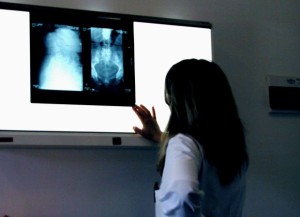At some time in their lives, Americans will experience a missed, delayed or wrong diagnosis from a health care provider. That’s according to the latest in a series of in-depth patient safety reports by the Institute of Medicine, which is part of the National Academy of Sciences. 
The first of these studies, released in 1999, was the bombshell, “To Err is Human,” which revealed some 100,000 people die every year in the U.S. as a result of health care errors. The latest estimates indicate the actual figure is likely four times that high. But diagnostic errors are scarcely mentioned in this literature. Now, researchers contend this under-studied issue accounts for far more problems than other types of mistakes, such as surgical mishaps or medication errors.
Much of research in the past has spotlighted mistakes that occur in hospitals. This is, of course, important. After all, that’s where emergency services are rendered, many surgeries take place and patients receive longer-term, inpatient critical care. However, it’s not where the majority of diagnostic errors happen. They occur in surgical centers, outpatient facilities and doctors’ offices.
A diagnostic error is one in which a health care provider gives the wrong diagnosis, misses an obvious diagnosis or is significantly delayed in providing the correct diagnosis to a patient. In these cases, we’re not talking about conditions that may be especially hard to diagnose or in which doctors and other health care providers are making a competent, good faith effort to find accurate answers for patients. Rather, we’re talking about cases in which the correct diagnosis was knowable, but those involved missed key indicators or failed to order the right tests or properly communicate information to the patient or other health care provider.
The key in any medical malpractice lawsuit is whether the health care provider deviated from the accepted standard of care for that profession and region.
Fort Myers medical malpractice lawyers know also that it’s not just doctors who are to blame. As the report details, it’s often an issue of poor communication and collaboration among health care professionals, laboratory technicians and others. Evolving, difficult-to-use computer systems are also an issue that researchers say is contributing to a substantial number of diagnostic mistakes, and evidence indicates the problem is getting worse.
As it now stands, researchers say an estimated 12 million adults suffer from a diagnostic error annually. That’s 5 percent of all adults who seek outpatient care. At some point in their lives, most Americans will suffer from this type of medical malpractice at least once. Whether these individuals have a case will depend largely on the outcome of that mistake.
Usually, plaintiffs had to show the diagnostic error resulted in serious harm. For example, a delayed cancer diagnosis may result in a patient being forced to undergo much more aggressive treatments than they would have had the condition been accurately identified months earlier. The result is pain and suffering, higher medical bills and lost wages, among other losses.
In some cases, a missed, delayed or wrong diagnosis can even result in death. There is often a critical window of opportunity to act when someone has a serious medical condition and an error in diagnosis sometimes causes that window to close.
Call Associates and Bruce L. Scheiner, Attorneys for the Injured, at 1-800-646-1210.
Additional Resources:
Most Americans will get a wrong or late diagnosis at least once in their lives, Sept. 22, 2015, By Lena H. Sun, The Washington Post
More Blog Entries:
Adult Portable Bed Handle Recall Re-Announced, as Response Rate Less Than 1 Percent, Oct. 12, 2015, Fort Myers Injury Lawyer Blog
 Florida Injury Lawyer Blog
Florida Injury Lawyer Blog





